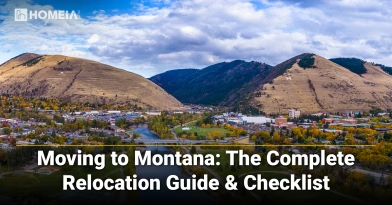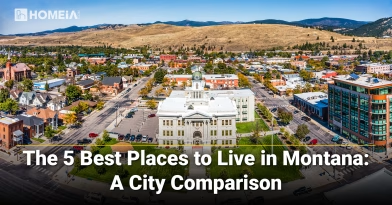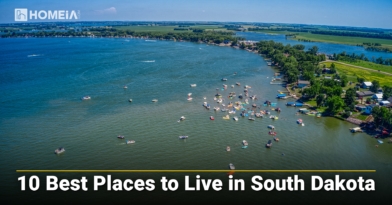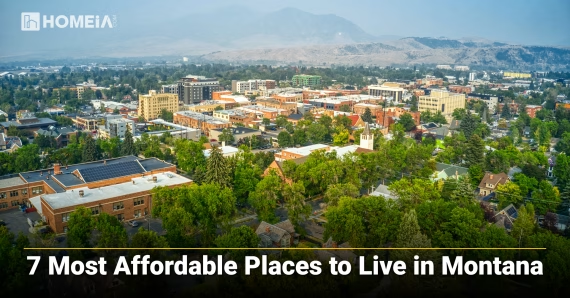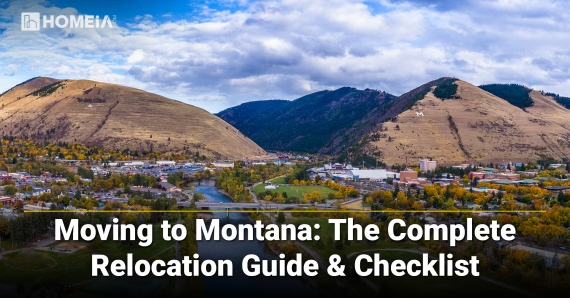The Pros and Cons of Living in Montana
- Local Editor:Local Editor: The HOMEiA Team
Published: Nov 18, 2025
- Category: City Living Guide
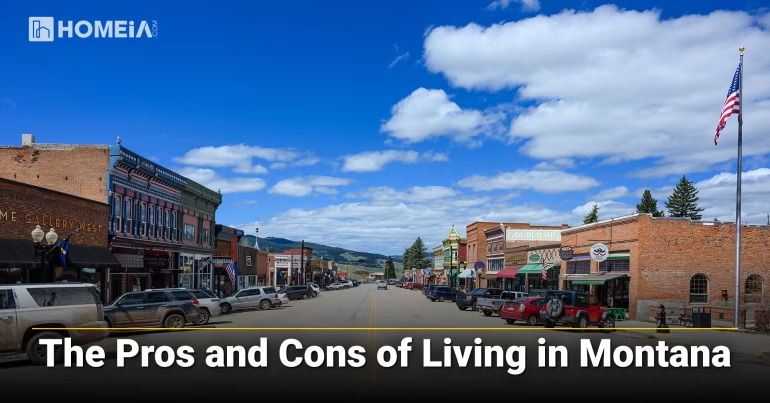
When picturing Montana, what comes to mind are vast mountain landscapes, pristine wilderness, and the spirit of the American West. But the Treasure State offers even more; here lies a place where outdoor adventure, tight-knit communities, and breathtaking natural beauty define everyday living. Yet, moving there comes with significant trade-offs, from harsh winters to limited job opportunities and geographic isolation. This guide provides a balanced, comprehensive analysis of the pros and cons of living in Montana while offering detailed insights into the best cities for young professionals, families, and retirees. For those considering other unique states, you might explore the pros and cons of living in Colorado.
Table of Contents:
- Key Takeaways
- I. Methodology: How We Evaluated Montana
- Pros: Why Choose Montana? Top Benefits
- Cons: Montana Living Challenges — What to Know
- Best Montana Cities for Young Professionals
- Best Montana Communities for Families with Young Kids
- Best Places to Retire in Montana
- Montana Lifestyle: Arts, Food, and Recreation
- Frequently Asked Questions About Living in Montana
Key Takeaways
- Natural Beauty & Outdoor Recreation: Unparalleled access to two national parks (Glacier and Yellowstone), millions of acres of public land, world-class fishing, hiking, skiing, and hunting opportunities defining the Montana lifestyle.
- Affordable Living: Overall costs vary, with Montana’s cost of living being 5% to 21% higher than the national average depending on the region. However, some smaller towns throughout the state, especially in the eastern portion, remain quite affordable compared to national averages, while resort areas and Bozeman are significantly more expensive.
- Strong Community Values: Tight-knit communities with low population density, friendly neighbors, and a strong sense of local identity and mutual support.
- Economic Challenges: Faces limited job diversity outside of agriculture, energy, tourism, and government sectors, with higher-than-average unemployment rates in many rural areas.
- Harsh Winters: Lengthy, shivering winters with heavy snowfall and temperatures that can drop well below zero, requiring significant adaptation for newcomers.
- Geographic Isolation: Limited access to major urban centers, specialized healthcare, and cultural amenities, with long drives required for many services.
I. Methodology: How We Evaluated Montana
Our Methodologies to create HOMEiA Score Ratings for Each Group of Content
HOMEiA uses a consistent, data-driven methodology to evaluate U.S. states for livability, affordability, and long-term value. Drawing on data from sources such as the Census Bureau, BLS, Zillow, the Tax Foundation, and FBI crime statistics, this approach supports rankings on cost of living, relocation planning, pros and cons, and best places to live.
Pros: Why Choose Montana? Top Benefits
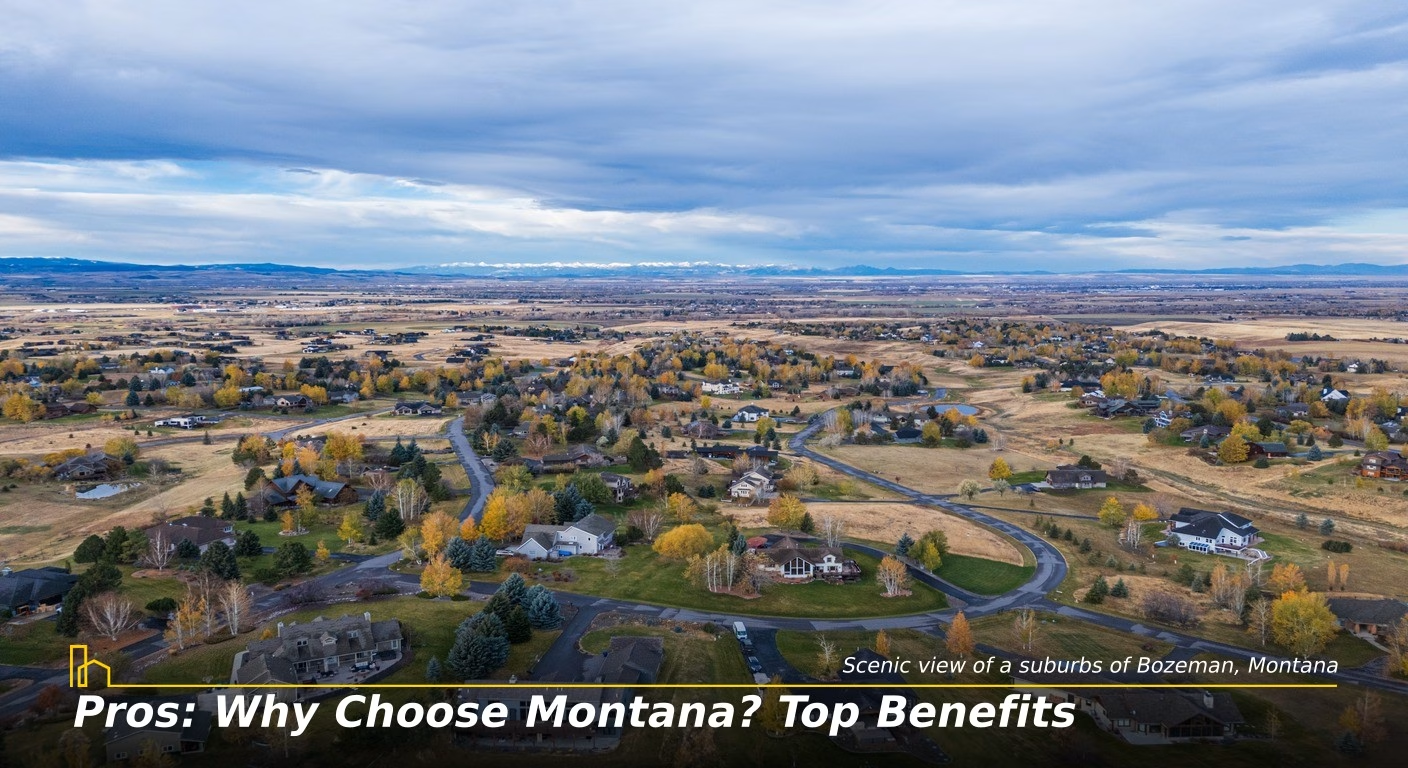
A. Unmatched Natural Beauty and Outdoor Recreation: Montana’s greatest asset is its stunning and diverse landscape. It boasts two national parks (Glacier and Yellowstone), numerous national forests, and millions of acres of public land. Creating a paradise for outdoor enthusiasts, residents hike in pristine wilderness areas, fish in blue-ribbon trout streams, ski at world-class resorts, and explore countless lakes and rivers. For those more inclined to the indoors, there are vibrant local arts scenes and community events. Adventures await anyone’s interests. For a different mountainous lifestyle, consider the best places to live in Colorado.
B. Affordable Cost of Living and Housing: MT’s affordability varies by location but generally features housing costs that are slightly above the national average. Populated metropolises like Bozeman and Missoula drive this price up, especially Bozeman, whose cost of living is about 30% above the national average. Less developed cities including Billings and Great Falls are near or below the national average in housing costs. Some smaller towns in Montana offer significantly more affordable housing options, with median home prices ranging from about $215,000 to $270,000. Overall, the cost of living is not uniformly 5%-10% below national average; it can be higher depending on the area and cost category.
C. Strong Community Values and Low Population Density: Life here is characterized by tight-knit communities and genuine neighborliness. With one of the lowest population densities in the U.S., residents enjoy personal space while maintaining strong community bonds. This creates an environment where residents know their neighbors, support local businesses, and participate actively in community life.
D. Amazing Climate and Four Seasons: The climate here goes through four distinct seasons, each with its own beauty and recreational opportunities. Summers are generally mild and perfect for outdoor activities, while winters offer world-class skiing and snow sports. The abundant sunshine throughout the year provides a constant mood-boosting backdrop to daily life, even during colder months.
E. Thriving Arts Scene and Western Culture: For those who appreciate authentic Western culture and local arts, this is a premier destination. Bozeman and Missoula are recognized for their vibrant arts communities, drawing creatives from around the world. The cultural scene is equally renowned, centered on the state’s Western heritage, Native American traditions, and contemporary artistic expression.
Moving to Montana: The Complete Relocation Guide & Checklist
Bordered by Canada and five U.S. states, Montana offers vast wilderness, outdoor adventure, and a strong sense of community. Home to over a million residents, it combines scenic beauty with affordability, no sales tax, and independent spirit. This guide provides key insights for relocating to the breathtaking Treasure State.
Cons: Montana Living Challenges — What to Know
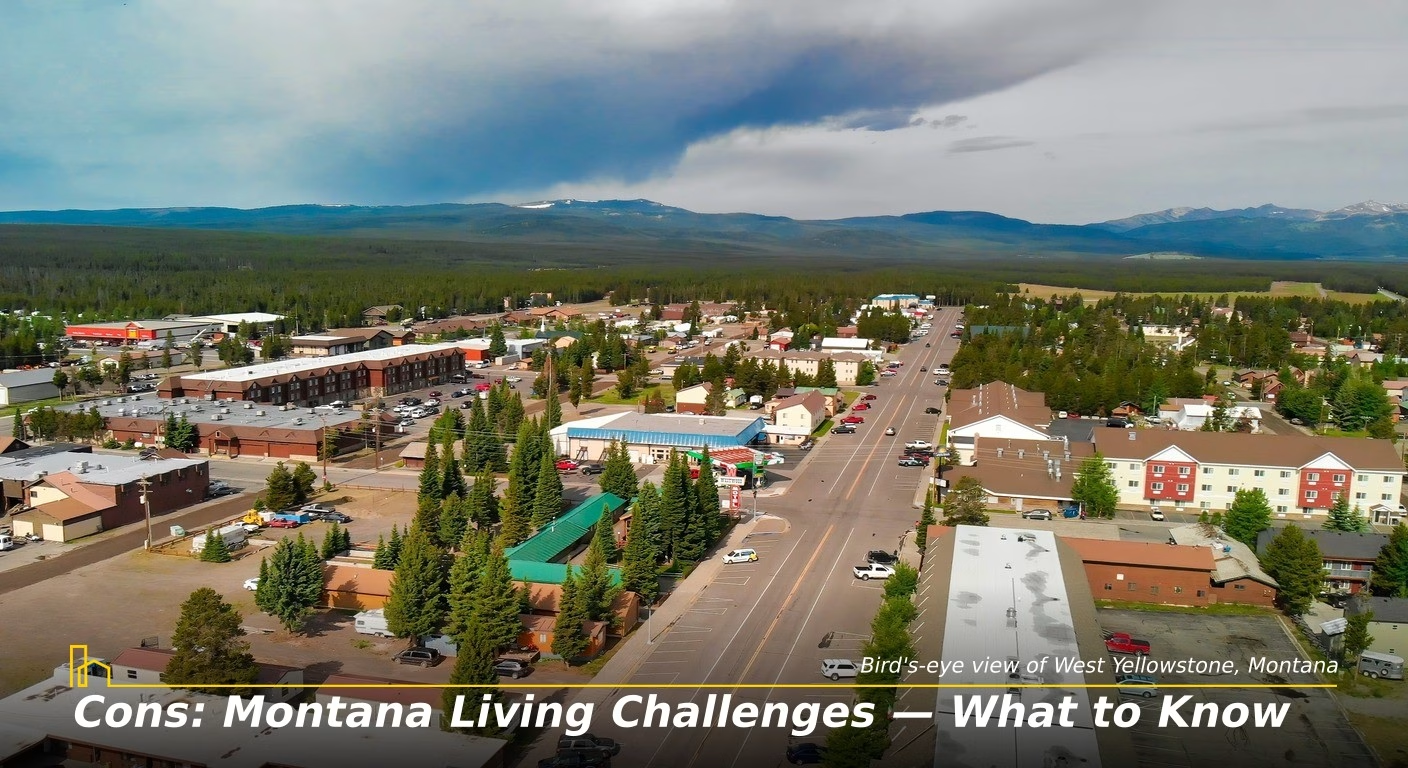
A. Limited Economy and Job Market: Montana’s economy is a significant challenge. Outside of agriculture, energy, tourism, and government sectors, it possesses a limited job market. This leads to grappling with higher unemployment rates than the national average in many areas. If your career is in a specialized field not related to the state’s core industries, you may need to develop a new skillset.
B. Harsh Winters and Seasonal Challenges: This is one of the state’s most significant drawbacks for newcomers. Residents experience long, cold winters with heavy snowfall and temperatures that can drop to -30°F or lower. Winter lasts from October through April in many areas, requiring significant adaptation, proper vehicle preparation, and mental resilience.
C. Geographic Isolation and Limited Services: As a large, sparsely populated state, it faces challenges with geographic isolation. Access to specialized healthcare, major shopping centers, and cultural amenities often requires long treks. While many communities are self-sufficient, this overall reality requires newcomers to be highly self-reliant. For a comparison of more connected states, see our guide on the best places to live in Colorado.
D. Healthcare Access Challenges: The healthcare system here faces significant challenges, particularly in rural areas. Access to specialized medical care is limited outside of larger cities, and residents must travel long distances for certain treatments. This can be a primary concern for families, seniors, and those with chronic health conditions.
E. Infrastructure and Internet Connectivity: Modern infrastructure can be inconsistent across the state. While urban areas have reliable services, it’s common for rural communities to struggle with spotty internet connectivity, limited cell service, and aging infrastructure. It impacts remote work capabilities, business operations, and overall quality of life.
Recommended for you
Best Montana Cities for Young Professionals
1. Billings
HOMEiA Score: 82/100
- Cost of Living: Close to U.S. average
- Monthly Rent: $1,200
- Home price to income ratio: 5.4:1
- Income to rent ratio: 50.0x
- Safety rating: 68/100
Montana’s largest city attracts recent college graduates seeking economic opportunity and urban amenities without sacrificing access to outdoor recreation. While less mountainous than in the west, Billings offers stable employment opportunities in healthcare, energy, and finance. With a growing downtown, numerous parks, and serves as the commercial hub for the region. Its central location provides reliable transportation links while maintaining reasonable housing costs.
2. Missoula
HOMEiA Score: 85/100
- Cost of Living: About equal to U.S. average
- Monthly Rent: $1,400
- Home price to income ratio: 6.8:1
- Income to rent ratio: 46.4x
- Safety rating: 72/100
Home to the University of Montana, Missoula has a youthful, energetic vibe with a well-respected arts and culture scene. Academia provides employment and drives innovation in environmental sciences and healthcare. Those new to the workforce are drawn to the city’s walkable downtown, growing tech and healthcare sectors, and incredible access to outdoor recreation in the surrounding mountains and rivers. It’s a creative, affordable alternative to larger Western cities with a major community focus.
3. Bozeman
HOMEiA Score: 88/100
- Cost of Living: Approximately 30% above U.S. average
- Monthly Rent: $1,600
- Home price to income ratio: 7.2:1
- Income to rent ratio: 43.8x
- Safety rating: 75/100
As Montana’s fastest-growing city, Bozeman is the undeniable economic hub for young professionals, offering the most diverse job market in the state. Opportunities abound in tech (supported by Montana State University and startups), healthcare, outdoor recreation industries, and education. The Bozone provides a unique blend of urban amenities—including a vibrant downtown scene with breweries and restaurants—with immediate access to world-class skiing at Bridger Bowl and hiking in the surrounding mountains. With networking events and a relatively short average commute, this college town is the ideal place to launch a career in the state.
7 Most Affordable Places to Live in Montana
Montana combines stunning scenery with surprising affordability, featuring low housing costs and no state sales tax. This guide highlights seven of the most budget-friendly Montana communities for 2025, analyzing housing, utilities, and transportation to help you find financial stability without losing Big Sky Country’s authentic outdoor charm.
Best Montana Communities for Families with Young Kids
1. Great Falls
HOMEiA Score: 80/100
- Cost of Living: Approximately 10% below U.S. average
- Monthly Rent: $950
- Home price to income ratio: 4.3:1
- Income to rent ratio: 63.2x
- Safety rating: 70/100
In central Montana, Great Falls offers an affordable, family-focused lifestyle. Work is rooted in agriculture, healthcare, and military (Malmstrom Air Force Base), providing stable employment. Families are drawn to the extremely low cost of living, exceptional community amenities including the renowned Children’s Museum, and access to outdoor recreation along the Missouri River.
2. Kalispell
HOMEiA Score: 84/100
- Cost of Living: Slightly below U.S. average (about 2% to 4% lower)
- Monthly Rent: $1,300
- Home price to income ratio: 6.2:1
- Income to rent ratio: 46.2x
- Safety rating: 74/100
Nestled near Glacier National Park, Kalispell offers an unparalleled combination of assets for families: access to world-class outdoor recreation, an enriched community, and growing economic opportunities in healthcare and tourism. Families are drawn to the overachieving school systems, numerous parks and recreational facilities, and the safe, family-oriented atmosphere of this growing community.
3. Helena
HOMEiA Score: 86/100
- Cost of Living: Approximately 3.5% above U.S. average
- Monthly Rent: $1,100
- Home price to income ratio: 5.1:1
- Income to rent ratio: 54.5x
- Safety rating: 78/100
As the state capital, Helena offers a classic family-friendly environment with in-demand government employment, highly-rated schools, and a significantly higher safety rating than larger cities. Located in a scenic valley with numerous parks, community centers, and family-friendly events, it provides a calm, secure environment while still being accessible to outdoor recreation in the surrounding mountains.
The 5 Best Places to Live in Montana: A City Comparison (updated)
Montana blends rugged wilderness with welcoming communities, offering endless opportunities for outdoor living and growth. This guide spotlights the five best Montana cities to live in 2025, based on affordability, opportunity, safety, and quality of life—from vibrant Missoula to scenic Bozeman—helping you find your perfect Rocky Mountain home.
Best Places to Retire in Montana
1. Livingston
HOMEiA Score: 82/100
- Cost of Living: About equal to U.S. average
- Monthly Rent: $1,200
- Home price to income ratio: 6.8:1 (Calculated)
- Income to rent ratio: 50.0x (Calculated)
- Safety rating: 76/100
Affordability and authentic Western charm are the name of the game in Livingston. Golden agers are drawn here by the reasonable cost of living, historic downtown, and proximity to Yellowstone National Park. It’s a quiet, artistic community with a relaxed pace perfect for those seeking a simple, culturally rich lifestyle centered around fly fishing, arts, and the beautiful Yellowstone River valley. For other retirement options, explore the best places to retire in the US.
2. Whitefish
HOMEiA Score: 85/100
- Cost of Living: About 10% above U.S. average
- Monthly Rent: $1,700
- Home price to income ratio: 9.2:1 (Calculated)
- Income to rent ratio: 35.3x (Calculated)
- Safety rating: 80/100
Tucked away near Glacier National Park, Whitefish is a premier retirement destination for valuing outdoor recreation and deep community bonds. This resort town offers fantastic skiing at Whitefish Mountain Resort, a charming downtown, and incredible access to hiking and water activities on Whitefish Lake. Retirees are drawn to its walkable community, active social scene, and the beautiful natural setting.
3. Bozeman
HOMEiA Score: 88/100
- Cost of Living: Approximately 30% above U.S. average
- Monthly Rent: $1,600
- Home price to income ratio: 8.5:1 (Calculated)
- Income to rent ratio: 37.5x (Calculated)
- Safety rating: 75/100
For retirees seeking an active, culturally rich lifestyle with pristine healthcare access, Bozeman is a top contender. Known for their medical facilities, vibrant arts scene, renowned restaurants, and access to world-class outdoor recreation. While housing is expensive, the array of activities, lifelong learning opportunities at Montana State University, and a mature, socially active community make it a rewarding place to retire.
The 3 Most Affordable Neighborhoods to Live in Grand Forks, North Dakota
Grand Forks blends affordability with quality living in neighborhoods like the historic North End, lively Downtown, and the University Area. Each offers unique character, community spirit, and budget-friendly housing. The city proves that small Midwestern towns can provide connection, opportunity, and urban amenities without the high cost of big cities…
Montana Lifestyle: Arts, Food, and Recreation
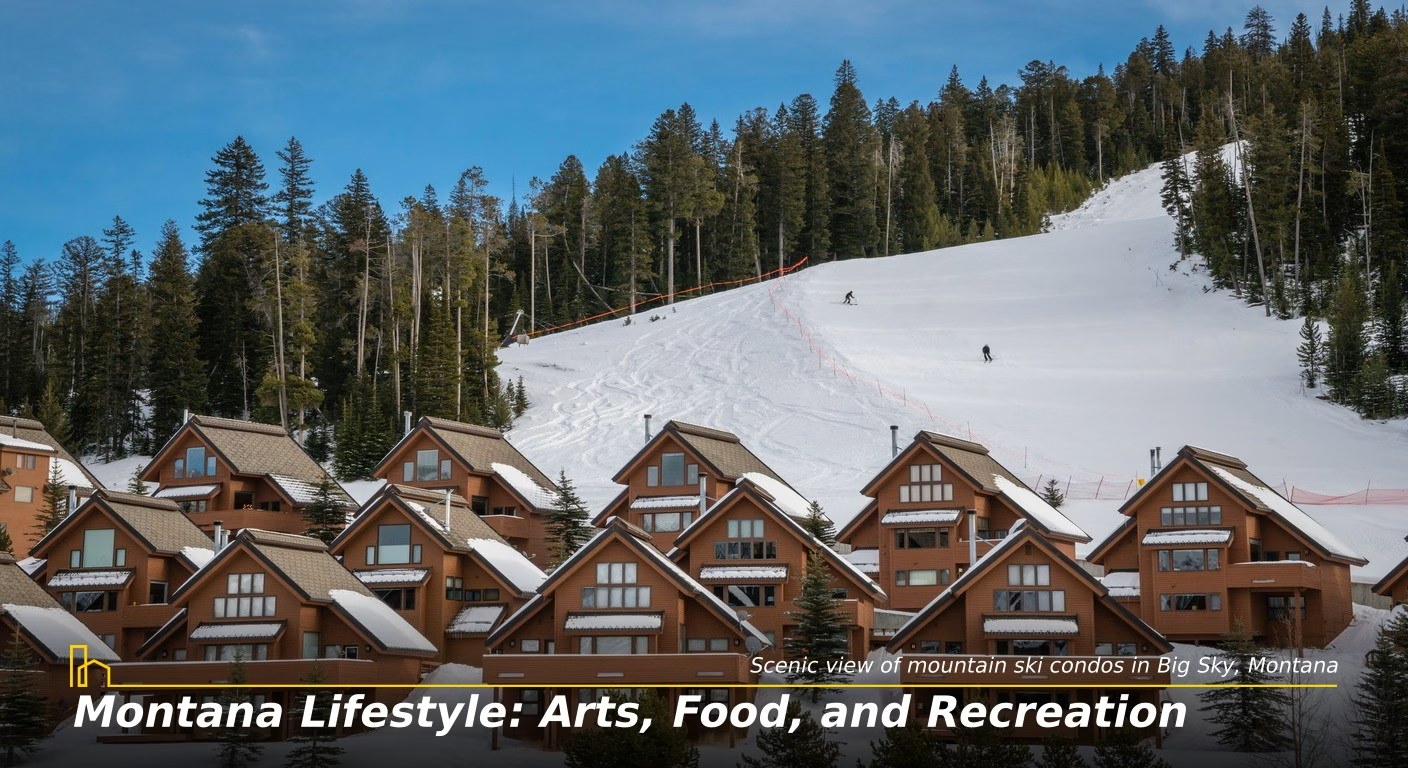
A. Arts and Culture: Montana’s culture is a unique blend of Western heritage, Native American traditions, and contemporary artistic expression. Missoula and Bozeman boast impressive galleries, theaters, and music venues, while smaller towns maintain strong local arts scenes. The state’s literary tradition is equally strong, with numerous writers and poets calling Big Sky Country home.
B. Food Scene: The Treasure State’s cuisine reflects its agricultural roots and Western heritage. Seeing bison burgers, huckleberry everything, Rocky Mountain oysters, and locally-raised beef on menus is common. The farm-to-table movement is strong, with farmers’ markets in towns across the state providing fresh local produce, meats, and artisanal products.
C. Outdoor Activities: Recreation is a way of life under the vast sky. Fishing, hiking, hunting, skiing, and camping are not only hobbies but integral to the lifestyle for many residents. Its extensive network of public lands ensures endless exploration for all ages and abilities, from gentle family hikes to challenging backcountry adventures.
D. Sports and Community Life: Community life often revolves around local events and outdoor activities. Montana currently has four minor league baseball teams, all part of the independent Pioneer League: the Billings Mustangs, Glacier Range Riders, Missoula PaddleHeads, and Great Falls Voyagers. Additionally, events like rodeos, county fairs, and fishing derbies capture community attention. This creates a strong sense of regional identity and connection to place.
Conclusion: Is Montana Right for Your Lifestyle?
This undeniable appeal lies in its unparalleled natural beauty, strong community values, and outdoor-focused lifestyle. Whether you’re building a career in Bozeman, raising a family in Helena, or enjoying an active retirement in Whitefish, Big Sky Country presents a compelling case if you can adapt to its harsh winters and geographic isolation. Weigh the benefits and trade-offs in terms of career, community, affordability, and personal resilience to decide if Montana is the right fit for your next chapter. For those still considering their options, our guide on essential steps for moving to a new city is a great resource.
Recommended for you
Frequently Asked Questions About Living in Montana
1. What is the cost of living in Montana compared to other states? The cost of living generally ranges from near the national average to about 21% higher depending on location and cost category. Larger cities and resort areas tend to be more expensive, while eastern Montana and smaller towns are more affordable. Housing costs are slightly above the national average in many urban areas but remain reasonable in smaller communities.
2. How severe are the winters really? Winters are long and can be frigid especially east of the Continental Divide. Temperatures regularly drop below zero, sometimes reaching -30°F or lower. Snow can persist from October through April, necessitating preparation such as winter tires, appropriate clothing, and home winterization.
3. Is Montana a good place for families? Yes, for families who value outdoor recreation, tight-knit communities, and safe environments for their children. Communities including Helena and Kalispell offer exceptional schools and family-friendly amenities. However, access to certain specialized services and activities can be more limited than in larger states.
4. What are Montana’s job prospects? Job prospects are plentiful within key industries like healthcare, education, outdoor recreation, agriculture, energy, and government. Other professional fields are limited, particularly in rural areas. Remote work has become increasingly viable, expanding opportunities for those with portable careers.
5. How is healthcare access across the state? Access to healthcare is bountiful in major cities like Billings, Missoula, and Bozeman, which have large, modern hospitals. It becomes increasingly limited in smaller towns and rural areas, where clinics may be smaller, and traveling to regional centers is necessary for specialized care.
6. What are the best outdoor activities in Montana? Fishing, hiking, skiing, hunting, camping, and wildlife viewing are top pastimes. The state’s diverse landscape provides endless opportunities for four-season recreation, from gentle family activities to challenging backcountry adventures.
The 10 Best Places to Live in South Dakota in 2025
South Dakota is one of those places where you can experience all four seasons, which is an appealing aspect for many people. It has a diverse array of cities and towns from which to choose, so there’s something for everyone within its borders…
Table of Contents:
- Key Takeaways
- I. Methodology: How We Evaluated Montana
- Pros: Why Choose Montana? Top Benefits
- Cons: Montana Living Challenges — What to Know
- Best Montana Cities for Young Professionals
- Best Montana Communities for Families with Young Kids
- Best Places to Retire in Montana
- Montana Lifestyle: Arts, Food, and Recreation
- Frequently Asked Questions About Living in Montana
HOMEiA is a city guide site where visitors can find detailed information about communities of interest. HOMEiA’s City Guides, created in partnership with local writers and editors, are curated lists of the best, safest, and most affordable places to live. The guides feature the HOMEiA Score, a proprietary index that rates communities on such factors as housing costs, education, employment, etc.
HOMEiA.com aims to be the premier site for people planning to relocate, providing them with insightful content and connecting them with skilled real estate professionals.
We also empower real estate professionals to establish or strengthen their web presence by highlighting their experience, knowledge and achievements. If you’re selected to join our list of certified real estate professionals, you will distinguish yourself from your peers — and earn HOMEiA’s support.
If you believe in HOMEiA’s mission, please share our website with others.
Table of Contents:
- Key Takeaways
- I. Methodology: How We Evaluated Montana
- Pros: Why Choose Montana? Top Benefits
- Cons: Montana Living Challenges — What to Know
- Best Montana Cities for Young Professionals
- Best Montana Communities for Families with Young Kids
- Best Places to Retire in Montana
- Montana Lifestyle: Arts, Food, and Recreation
- Frequently Asked Questions About Living in Montana


